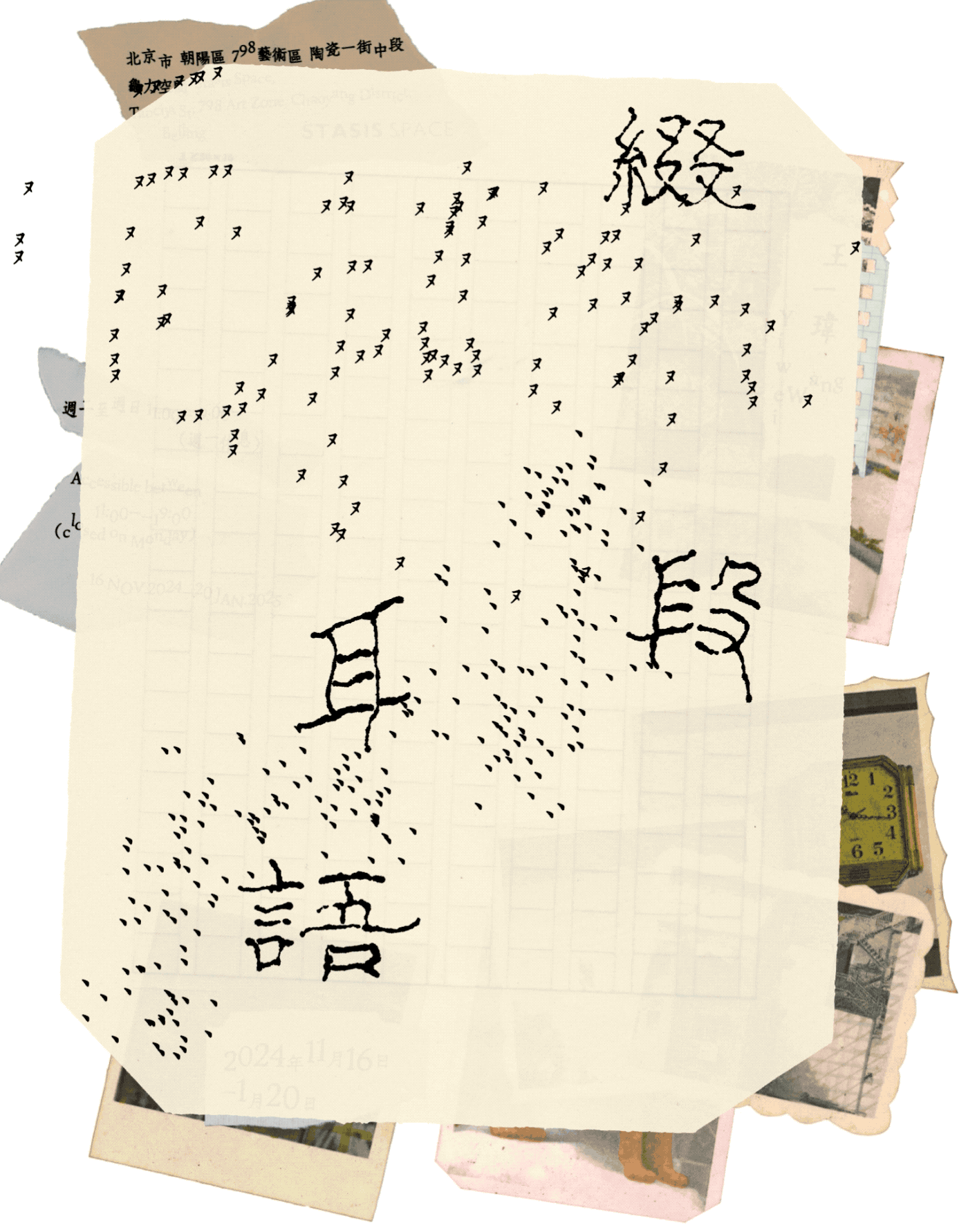
缀段耳语 Episodic Murmuring

《缀段耳语》是一个跨越图像与文字的互动叙事作品,包含:图像档案库、超文本游戏、互动小说、参与式拓片等。在缀段耳语中,图像不仅是叙事的辅助,更是带有独立叙述逻辑的“碎片”。那些源于陌生人的相册、自家影像或重制的“老照片”, 经过精细的编号和分类,形成一个看似严谨的档案库。
作品的文字部分融入了闲谈与传闻,包含暗恋、故土、飞行、藏匿和歌谣等元素,营造出如散步般的道听途说的氛围。在虚构的地图上,地理空间与个人记忆相互映射,《缀段耳语》旨在用图像、档案和非线性的叙述方式,捕捉西南地区的氛围,通过坊间传闻和对宏大叙事的解构与再诠释,构建出一个充满私人化色彩的地方志。

In Episodic Murmuring, text as part of the archive content differs from typical archival annotations. It does not simply supplement or explain the images but rather acts as an anchor for the imagery, carrying a prophetic narrative quality. Through this interplay, the combination of text and images forms a psychological image, allowing viewers to project their own past or future onto the work, or connect certain collective memories with the imagery. This interactivity enriches the layers of interpretation within the piece. The experience resembles flipping through a “book of answers,” with memories automatically linking to the images in the Episodic Murmuring archive. It also feels like a whisper, as if someone is softly conveying mysterious and prophetic words in your ear.
在《缀段耳语》中,文字作为档案内容的一部分,与一般档案的文字注解有所不同。它并非简单地对图像本身进行补充或说明,而是成为图像的锚点,承载着一种预言性质的叙述。通过这种方式,文字和图像的结合形成了一种心理图像,观众得以将自身的过去或未来投射到作品之中,或者将个人的某些集体记忆与图像建立联系。这种互动性为作品提供了更多层次的解读。这种体验如同翻阅一本“答案之书”,记忆将与《缀段耳语》档案库中图像自动链接。也如耳语一般,有人在耳边悄悄地传递带有神秘和预言性质的语句。




The Wangjiang Dalou Jinhuicui Rubbing Project is a participatory art initiative led by artist Wang Yiwei in collaboration with the Friends of Nature Chengdu Group. It seeks to explore the relationship between individuals and the urban environment by documenting and reconstructing memories of everyday living spaces. Inspired by the well-known Chengdu landmark “Wangjiang Tower,” the artist modified the name by adding the word “Dalou” to transform this historic site into a representation of a common residential block, symbolizing places that, while unremarkable to outsiders, hold deep significance for those who lived there.
Participants etched images of places from their memories—now vanished or altered—onto a door panel, then recreated these memories through rubbings, weaving new narratives and memory connections. By harnessing the reproducibility of printmaking and the craft of rubbings, the workshop embedded individual memories into the texture of the cityscape. Each participant’s story and memory were recorded and presented using the form of Jinhuicui (an assemblage of layered fragments), becoming an unofficial local chronicle.
This process goes beyond being merely an educational activity or collective creation; it serves as an expression of “participatory art,” emphasizing the distinction between creative intent and the recording of the artistic process. In this way, the workshop focuses on past lived experiences, leaving room for reflection on the future. This sense of nostalgia is not merely a sentimental longing for what has been lost but also a confrontation with the fear of death and disappearance, encouraging participants to reshape their own networks of existence and memory within a constantly shifting society.

王一玮 Wang Yiwei
“版画 是处理历史语境下图像的方式”
Born in 1999 in Suining, Sichuan, Wang Yiwei is a visual researcher who graduated with a bachelor’s degree from the Picture Book Studio at the Central Academy of Fine Arts (CAFA) and later earned a master’s degree from CAFA’s Printmaking Department. Her work draws inspiration from urban spaces, local memories, and everyday experiences. Through diverse media such as games, printmaking, and rubbings, Wang explores the complex interplay between individuals and society.
She is also deeply engaged in participatory art practices. As one of her key methods, workshops extend her focus on memory, locality, and interpersonal connections. Wang’s workshop practices seek to break the linearity of historical narratives, reconnecting individual life paths with urban spaces to create dynamic, emotionally resonant networks of memory.
1999年生于四川遂宁,图像研究者,本科毕业于央美绘本工作室,硕士毕业于央美版画系。她的创作深受城市空间、地方记忆和日常经验的启发,通过游戏、版画、拓片等多样媒介,探索个体与社会之间的复杂关系。她同样关注艺术的参与性,工作坊作为一玮的实践之一,延续了她对记忆、地方性与人际关系的关注,她的工作坊实践试图打破历史叙事中的单一性,将个体的生活轨迹与城市空间重新连接,形成具有情感温度的动态记忆网络。





1.共摊同语 Same "Episodic Murmuring"

During the exhibition, we will host a long-term interactive activity inviting every visitor to create their own “Episodic Murmuring” based on the images and text from the Episodic Murmuring archive. This activity aims to extend the essence of artist Wang Yiwei’s work by allowing viewers to integrate their own memories, emotions, and imaginations with the archive’s presented images and texts, creating unique narratives and expressions.
We will provide writing materials for participants, encouraging everyone to freely create and engage in deeper interaction with the exhibition content.
在展览期间,我们将举办一个长期的互动活动,邀请每一位前来观展的观众根据《缀段耳语》的图像与文字档案库,书写出属于自己的“缀段耳语”。这一活动旨在延续艺术家王一玮作品的特性,通过结合档案库中所呈现的图像与文字,观众可以将自身的记忆、情感与想象融入其中,生成独特的叙事与表达。
我们将为参与者提供书写材料,鼓励大家自由创作,并在此过程中与展览内容进行深入的交流与互动。
